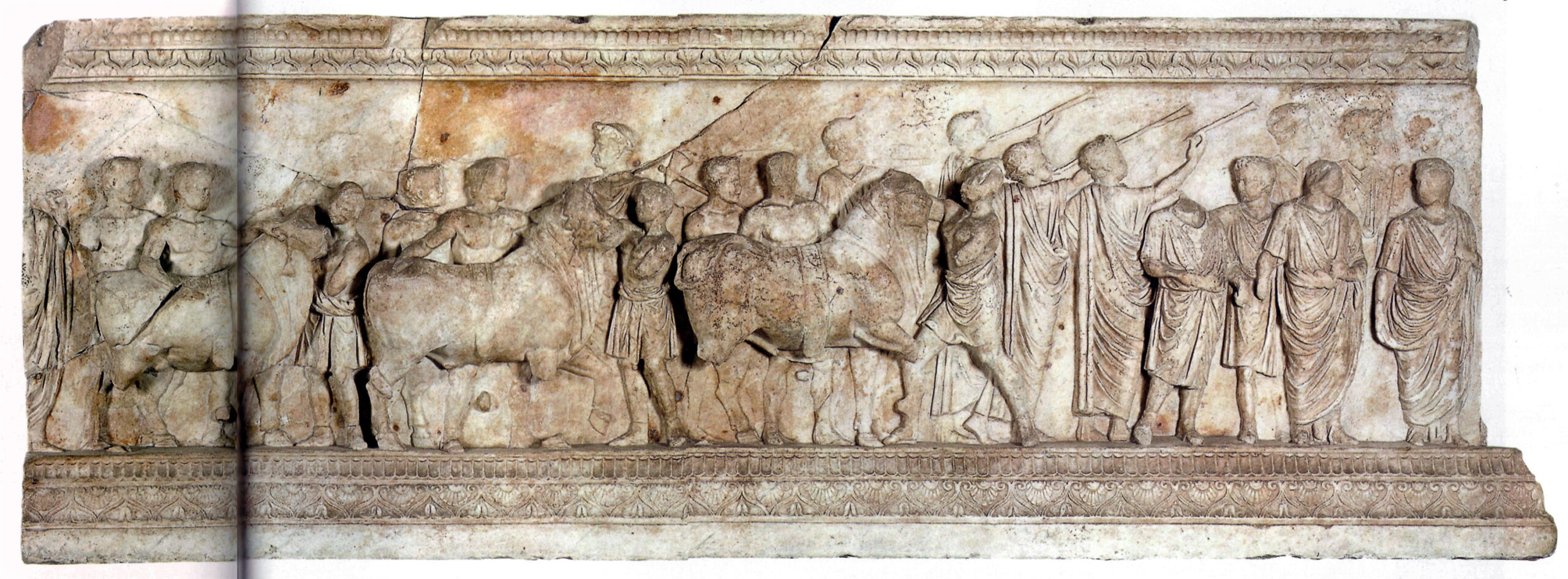Callirhoe’s funeral pompe
| TITLE: |
| Callirhoe’s funeral pompe |
| DATE: |
| Fiction, novel (written in mid. 1st c. AD) |
| TEXT: |
| HERCHER, R. (1859): Chariton. Chaereas and Callirhoe 6.1.1-3: Chariton, De Chaerea et Callirhoe |
| EDITIONS/TRANSLATIONS: |
GOOLD, G. P. (1995): Chariton: Callirhoe. Loeb Classical Library. Harvard University Press, Cambridge MENDOZA, J. (1979): Caritón de Afrodisias / Jenofonte de Éfeso. Quéreas y Calírroe/ Efesiacas. Fragmentos novelescos. Gredos. Madrid TRZASKOMA, S. M. (2010): Two Novels from Ancient Greece: Chariton’s Callirhoe and Xenophon of Ephesos’ An Ephesian Story. Hackett Publishing Company, Indianapolis / Cambridge |
| KEYWORDS: |
| Word used to mean procession: |
| ἐκκομιδήν (“a carrying out of a corpse / burial”, Chariton Chaereas and Callirhoe 6.1.1, τὴν ἐκκομιδὴν κατασκευάσαι βασιλικήν; 6.1.2, Τίς ἂν οὖν ἀπαγγεῖλαι δύναιτο κατ̓ ἀξίαν τὴν ἐκκομιδὴν ἐκείνην;) |
| Word used to mean the cult images: |
| The burial wagon or couch (6.1.2,κλίνης; 6.1.5, Ἔφερον δὲ τὴν κλίνην οἱ Συρακουσίων ἔφηβοι) The hoplites caried the standards of Hermocrates’ trophies (6.1.3,ὁπλῖται φέροντες τὰ σημεῖα τῶν Ἑρμοκράτους τροπαίων) |
| Gods or other entities named: |
| Description of the cult images: |
| Procession’s route: |
| From her house to the burial place out of town |
| Frequency with which the procession takes place: |
| Performers: |
| The Syracusan army led the procession: first, the cavalry (ἱππεῖς), followed by the hoplites (ὁπλῖται), the Council (βουλή) and the citizens (δήμῳ) in the middle, all of them escorting her father Hermocrates (6.1.3, Προῄεσαν δὲ τῆς κλίνης πρῶτοι μὲν οἱ Συρακουσίων ἱππεῖς αὐτοῖς ἵπποις κεκοσμημένοι, μετὰ τούτους ὁπλῖται φέροντες τὰ σημεῖα τῶν Ἑρμοκράτους τροπαίων, εἶτα ἡ βουλή, καὶ ἐν μέσῳ τῷ δήμῳ πάντες οἱ Ἑρμοκράτην δορυφοροῦντες) This first group was followed by the women of the citizens dressed in black (6.1.3, αἱ γυναῖκες τῶν πολιτῶν μελανείμονες) The burial couch was carried by the ephebes (6.1.5, Ἔφερον δὲ τὴν κλίνην οἱ Συρακουσίων ἔφηβοι) |
| References to the public attending the procession: |
| Rites related to the procession: |
| Allusions to conduct or forms of reverence: |
The women of the citizens dressed in black (6.1.3, αἱ γυναῖκες τῶν πολιτῶν μελανείμονες) Everyone in the procession was mourning and crying out loudly, above all of the her husband Chaereas (6.1.5, Πάντων δὲ θρηνούντων μάλιστα Χαιρέας ἠκούετο) |
| Other remarkable elements: |
| The corpse wore her wedding dress on a golden burial couch (6.1.2, Κατέκειτο μὲν Καλλιρρόη νυμφικὴν ἐσθῆτα περικειμένη καὶ ἐπὶ χρυσηλάτου κλίνης μείζων τε καὶ κρείττων) The funeral procession was followed by the treasure (6.1.4, πλοῦτος ἐνταφίων): gold, silver, clothes, presents |
| BIBLIOGRAPHY: |
BÖMMER (1952), RE: s.v. Pompa. Herrscher, Vol. XXI.2, p. 1972, n.340. PERRY, B. E. (1930). “Chariton and his romance from a literary-historical point of view”. American Journal of Philology. The American Journal of Philology, Vol. 51, No. 2. 51 (2): 93–134 TILG, S. (2010): Chariton of Aphrodisias and the Invention of the Greek Love Novel. Oxford University Press, Oxford |
